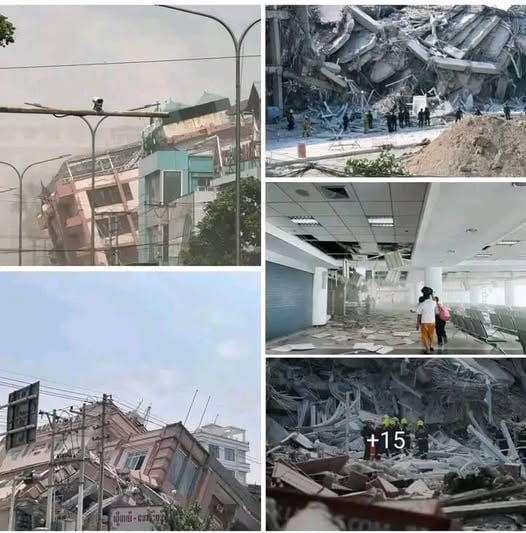BREAKING NEWS Alert: Powerful 7.7 magnitude earthquake

In the early hours of Monday morning, disaster struck Asia when a powerful and violent earthquake, registering a magnitude of 7.7, rocked vast areas across Myanmar, southern China, and northern Thailand. The quake has already claimed dozens of lives, left hundreds injured, and trapped countless others under piles of rubble, setting off an intense regional emergency response.
According to the United States Geological Survey (USGS), the earthquake hit at precisely 3:42 a.m. local time. Its epicenter was located in a remote, mountainous area straddling the border between Myanmar and China’s Yunnan Province, at an alarming depth of just 10 kilometers. Such a shallow quake often results in more severe ground shaking, and the effects were widely felt across the region. Cities in northern Thailand, including Chiang Rai and Chiang Mai, reported powerful tremors that led to widespread panic and immediate mass evacuations, as terrified residents scrambled for safety.
Myanmar Suffers the Hardest Blow
While all three countries experienced significant impacts, Myanmar appears to have suffered the most devastating effects so far. Authorities there quickly declared a state of emergency in several provinces. Preliminary official reports indicate at least 48 confirmed deaths and over 300 injuries, with emergency workers warning that these numbers are expected to rise sharply as search-and-rescue efforts continue. Many buildings in the region, particularly in the city of Lashio, crumbled entirely under the force of the tremors, leaving residents trapped beneath debris.
Rescue operations are currently underway, with teams working tirelessly around the clock amid precarious conditions to locate and extract survivors. Emergency shelters have been set up for displaced families, and urgent calls for international assistance have been made to aid the overwhelmed local response units.
One survivor, Myo Thant, a resident of Lashio, shared his harrowing experience: “We heard a deafening noise, and suddenly, the whole house shook violently. The walls cracked, furniture toppled, and the ground beneath us felt like it was rolling in waves. Somehow, my family and I managed to get out moments before the roof came crashing down.”
Widespread Impacts Across Borders
In Yunnan Province, China, tremors were felt as far away as Kunming, the provincial capital, leading to temporary power outages and building evacuations. Chinese emergency services were swiftly mobilized, and state media reports suggest that dozens have been injured, though a full assessment is still underway. In Thailand, the quake caused structural damage to several older buildings, especially in Chiang Mai, where schools and public facilities have been closed as a precaution.
Aftershocks have been reported throughout the morning, compounding the fear and danger for residents already grappling with the immediate aftermath. Seismologists warn that further aftershocks could continue over the next several days, potentially causing additional damage to already weakened structures.
The broader humanitarian situation is growing increasingly dire, with thousands left homeless and in urgent need of shelter, clean water, and medical care. Roads and communication networks in many affected areas have been severely disrupted, hampering rescue operations and the delivery of aid. Governments in the region have called for calm but acknowledged the scale of the crisis and the need for a coordinated international response to manage the unfolding disaster.
As day breaks and more information becomes available, the full extent of the destruction is slowly coming into focus. For now, the focus remains on rescuing those still trapped and providing relief to the countless families whose lives have been upended by one of the most powerful earthquakes to strike the region in recent history.
